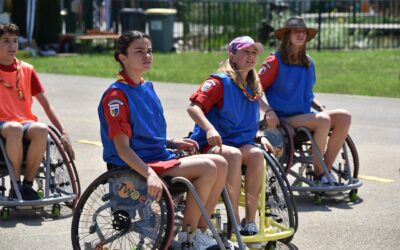Written by admin
If you only read one scholarly work on ableism, read this book. Ashley Shew shares with us her voyage through multiple pathways from able to disabled. She chronicles her unique personal experience, situates this within a strong academic framework, and provides real-world historical and concurrent examples of ableism in action. By the end of the book, the reader has a completely different view on fixing what may not need to be fixed in the ways able bodied people often think.

Ashley Shew. Against Technoableism: Rethinking Who Needs Improvement. W.W Norton & Company. 2023
The book in my mind targets the myths that able bodied researchers have adopted, as least some of the time. This is not for nefarious reasons but from the absence of the relevant lived experience to guide them. The first area that struck me as important was the research on and desire to document the narratives of disabled persons. These narratives depict simplistic stereotypes of the person with a disability as a “warrior” combating disability, or as a person the world learned to love. These stereotypes are typically how the media and entertainment industries like to depict people with disabilities. To quote, “This is a book about the stories that disabled people tell that nondisabled people usually aren’t interested in.” (p.4; l.5-6).
The modern narrative now includes the ableist perspective that technology is the “fix” for disability. Technoableism “is a belief in the power of technology that considers the elimination of disability a good thing, something we should strive for. It’s a classic form of ableism – bias against disabled people, bias in favor of nondisabled ways of life. Technoableism is the use of technologies to reassert those biases, often under the guise of empowerment.” (p.12; l.4-9
The book addresses the ableist tendencies that have been applied to different populations. Closest to my life’s work is technologies for mobility. She queries why walking has to be the goal for everyone. If all people could walk, there would be no need for society to adapt to how people with disabilities function, people with disabilities should just adopt all possible technologies to walk. She describes exoskeletons, robotics, and stairclimbing wheelchairs. These are expensive, heavy, difficult to use and perhaps would not be the technologies that people living their lives with disability would choose to spend their time, energy, and limited resources. A second area of poignancy is how the ableist view has shaped the treatment of people with autism with the potential to do harm. This brief annotation does not do justice to the richness of the book which I encourage you to read for yourself.
My learning from reading this book is that rehabilitation professionals have a strong tendency to be ableist in their desire to “fix” disabilities. However, to counterbalance these ableist tendencies, we are also concerned about preventing the emergence of new disabilities and preventing deterioration in the current ones. We also are focused on our client’s goals, but we need to play a stronger role as facilitators of these goals rather than fixing what we see could be fixed but may not be what the person would prioritize.
Annotated by Nancy Mayo
Related Articles
Related
Here are some dos and don’ts to help tackle ableism
Throughout the course of our careers and lived experiences, we have seen the daily ableism people living with disabilities contend with. As professors of education and disability ethics, we have put together the following list of dos and don’ts.
The story of Dr. Lynn Ashdown
In this episode, we are joined by Dr. Lynn Ashdown, a patient experience expert who advocates for the inclusion of patients in all levels of healthcare. Dr. Ashdown obtained her medical degree from The University of Ottawa and began her residency in family medicine...
Physicians’ Perceptions Of People With Disability And Their Health Care
Over 61 million Americans have disabilities, and increasing evidence documents that they experience health care disparities. While many factors likely contribute to these disparities, one little-studied but potential cause involves physicians’ perceptions of people...



